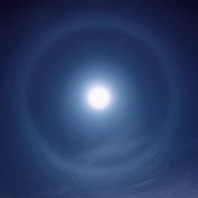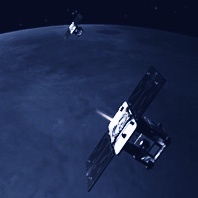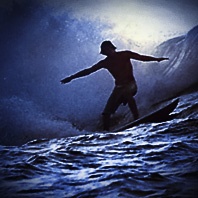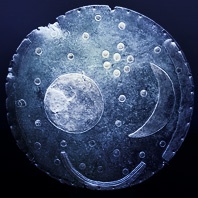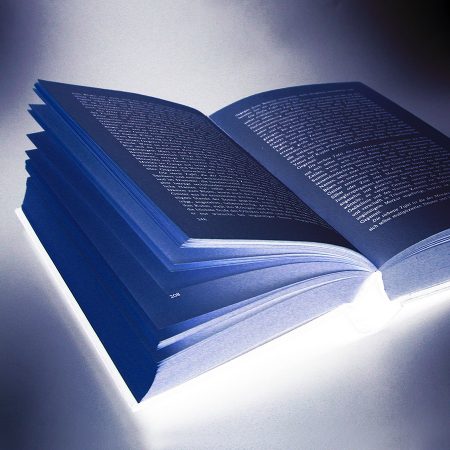Tag:
Astronomy
One obviously has the night sky before one’s eyes when thinking of the full moon. In reality, however, the event »full moon« has nothing to do with the fact whether it is night or day for us. The full moon occurs when Sun – Earth – Moon form a line in space and exactly in this order. The Earth lies in fact between the Sun and the Moon. Depending on what time this happens, it is night on the hemisphere that is turned away from the Sun and you can see the Moon in the sky. But on the hemisphere that is turned towards the sun it is daytime at this point and the full moon cannot be seen, because when observed from this position it is actually behind the Earth.
Read more
When observing the Moon, you can see dark spots on its surface. In the old days, these were thought to be the seas and oceans just like on Earth, so they were called »mare« (plural: »maria«). Giovanni Riccioli (1598–1671), an Italian priest and astronomer was leading in this area and was responsible for giving many lunar maria their Latin or partially poetic names. We would like to single out a few that we consider to be worthwhile mentioning.
Read more
We would like to turn our attention to two interesting types of light apparitions around the Moon: halos and coronas. Both are optical phenomena in the atmosphere that, if looked at from a physical point of view, come about in different ways and also look dissimilar.
A halo (left picture) develops through refracting ice crystals and creates a clearly defined light ring around the Sun or the Moon, whereas the surface between the celestial body and the ring, almost appears to be empty. Light spots, light arches and pillars can also emerge.
Read more
A probe is an unmanned flying object, which explores space. Different to a satellite, a probe does not circle the Earth but flies to other celestial bodies, which they circle, too, but are then called orbiters. Two of these probes have been on the way to the Moon since 10th September 2011, to take measurements with unprecedented accuracy. The GRAIL lunar probes have reached the orbit of the Moon as planned, at the turn of the year 2011/12 and are now currently at work, until they will shatter on the Moon’s surface. In the meantime, they will have transmitted lots of data back to Earth.
Read more
The new moon is the opposite pole to the full moon, being the time when the Moon is not visible in the sky to us people. Maybe this is why we pay less attention to it, because what you don’t see is less prevalent in our awareness.
However, there is one aspect, which continues to lend significance and fascination to the new moon. It is the word »new« and the described moment of renewal and of a new beginning. This word can be found in different languages:
Read more
This is about how to differentiate the waxing moon from the waning moon in the sky. »Waxing« is known to be the lunar phase between the new moon and the full moon (meaning the time when the crescent increases in size), whereas »waning« is known to be the lunar phase between the full moon and the new moon (the time when the crescent decreases in size). In order to remember on which side the curve is, here are some neat mnemonics.
Read more
As is generally known, the moonlight is actually sunlight reflecting from the surface of the Moon and reaching us here on Earth. You ask yourself the question, whether the moonlight may have a different colour than the sunlight, especially since a nightly scenery usually appears to be bluish. Also movie scenes, are portrayed in blue and so are many pictures and photographs. We would like to forestall the answer: the moonlight is nearly white. The night appears blue due to other reasons.
Read more
It is well known that the tides are caused by the tidal forces that are formed through gravity between the Earth and the Moon (and also between the Earth and the Sun). To put it simply, you can say that the Moon moves masses of ocean waters. At the full moon and the new moon, the Sun, the Moon and the Earth are roughly in alignment, hence, the forces are greater and cause so-called spring tides, thus a slightly higher tide. Now, many people conclude that the Moon – and in particular the full moon – ought to move and influence us people accordingly, because our bodies consist mostly of water. This claim contains several errors in reasoning, which we would like to explain in the following.
Read more
When natural forces are involved, people are mostly torn between fear and fascination. They are looking for the challenge to come into contact with these forces. At the same time, everyone has to respectfully recognize these elemental forces, sooner or later. This becomes impressively apparent in surfing, when a person is gliding on a metre high wave on a surf board. If he manages to stay in front of the crest, and not to be rolled over by the breaking of the wave, he is the winner and in the belief to control the element. If he is not able to do so, it mostly turns dangerous or at least uncomfortable. It is a risky game.
Read more
This disk, made of bronze and gold, with an age of around 3,600 years, belongs to the oldest find representing astronomical phenomena and thereby depicting planets and stars in the sky. It is thus of great value, because it is evidenced that people of the Bronze Age (2200-800 BC) did not only possess manual skills to create such a refined metal disk, but above all, had the knowledge about astronomical processes. They observed the celestial events with the naked eye and portrayed this in an artistic form.
Read more


